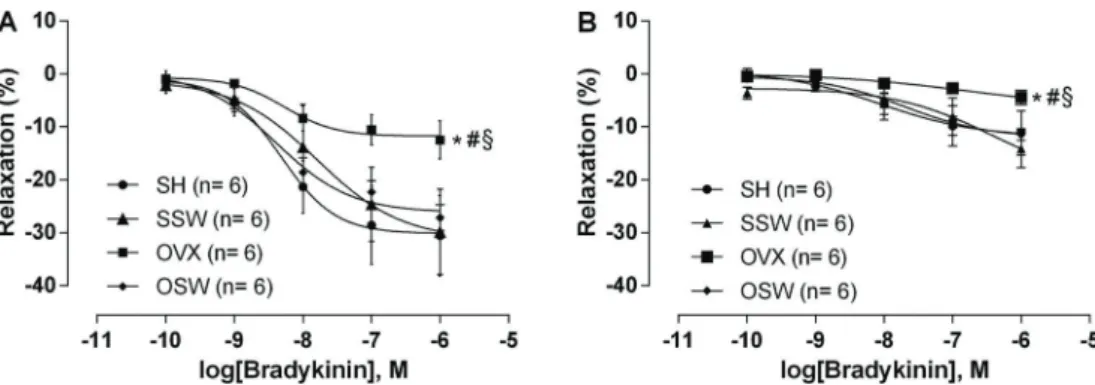Swimming training prevents coronary endothelial dysfunction in ovariectomized spontaneously hypertensive rats
Texto
Imagem



Documentos relacionados
We also measured the activity of hepatic phosphoenolpyruvate carboxykinase (PEPCK), a key enzyme in the control of gluconeogenetic pathways, and blood glucose, free fatty acid
In the present investigation, the effects of PEG 4000 on the tail arterial beds of normotensive and spontaneously hypertensive rats were studied both in the presence and in
Table 3.. systolic, diastolic and mean blood pressure, and total peripheral vascular resistance in- dex in SHR, ii) losartan improved arterial baroreflex sensitivity for bradycardia
There were two major findings of this study: first, the RTHO rats had a lower AP and HR at rest than the rats in the sedentary hypertensive groups; second, resistance exercise
The main findings of this study were as follows: i ) E2 therapy and combined therapy with E2 and DRSP restored endothelial dysfunction caused by estrogen deficiency in hypertensive
We determined the effects of exercise training and detraining on the morphological and mechanical properties of left ventricular myocytes in 4-month-old spontaneously hypertensive
Rats from control and Ang II-hypertensive groups were treated with vehicle or clopidogrel, for 14 days, to evaluate 2-MeS-ADP responses, endothelial function and vascular
This paradox, in which the possible increase in the sympathetic activity, promoting tachycardia in the hypertensive animals treated with L-NAME, would be associated with